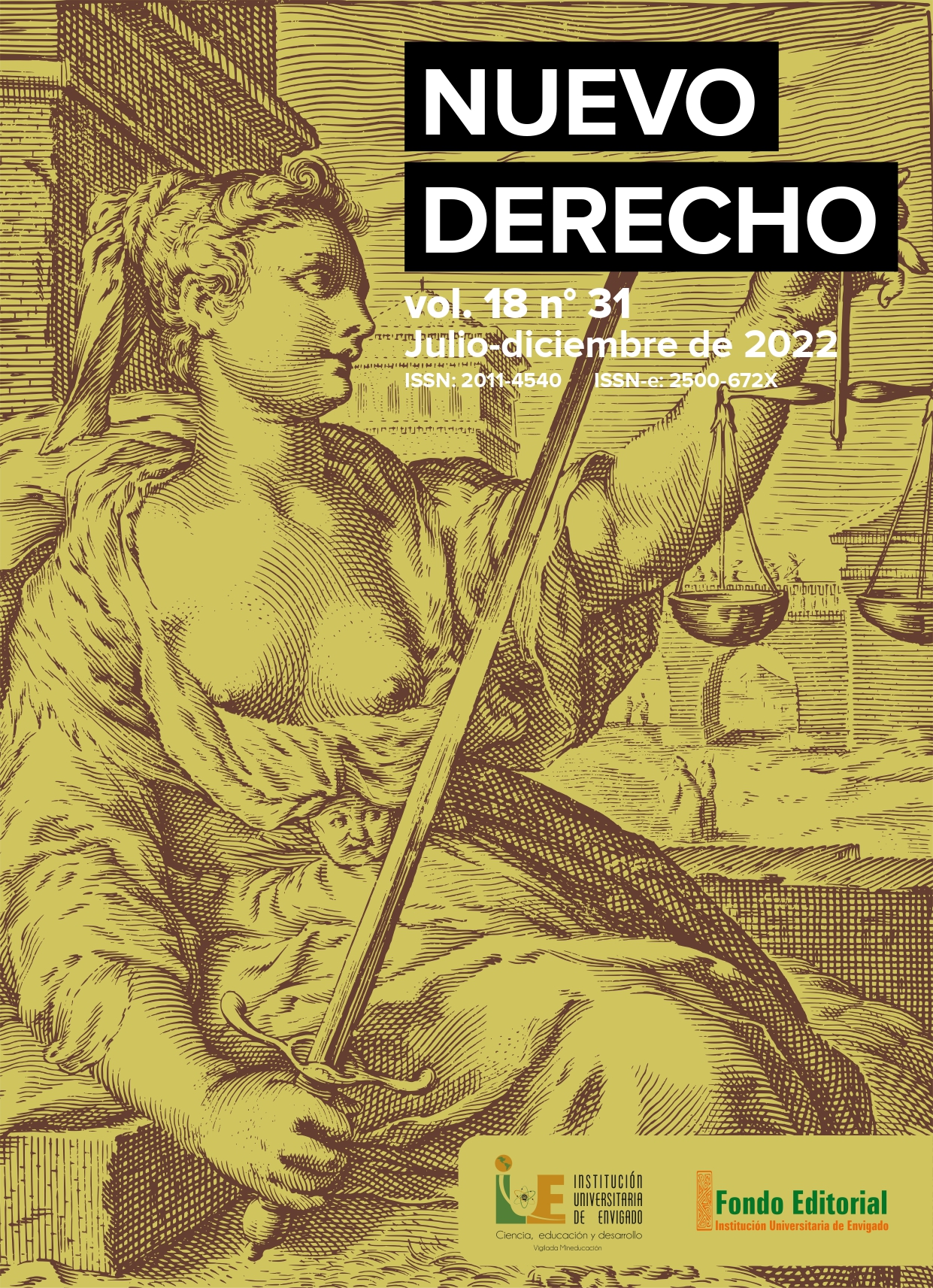The Right to Truth in Colombia's Comprehensive System of Truth, Justice, Reparation, and Non-Repetition. A Direct Approach to the Intrinsic Relationship between its Mechanisms and Objectives
DOI:
https://doi.org/10.25057/2500672X.1462Keywords:
Right to the truth, Transitional Justice, Human Rights, Comprehensive System of Truth, Justice, Reparation, and Non-RepetitionAbstract
The peace deal between the Colombian Government and the former Revolutionary Armed Forces of Colombia established the Comprehensive System of Truth, Justice, Reparation, and Non-Repetition, comprised of the Truth, Coexistence, and Non-Repetition Commission, the Special Jurisdiction for Peace, and the Unit for the Search of Persons Presumed Disappeared in the context and because of the armed conflict. This set of mechanisms guarantee the rights to truth, justice, reparation, and measures of non-recurrence as stipulated in the Final Agreement for the Termination of the Armed Conflict and the Construction of a Stable and Lasting Peace. One of its most critical and imperative aspects is the right to truth for the victims of serious human rights violations and their relatives. This right, conceived primarily as a human right, coexists with the other three pillars of transitional justice, interacting and complementing them.
This paper aims to define the content of the right to truth in the three bodies that make up the Comprehensive System, to conclude that, although each mechanism pursues a different kind of truth, there is a bond of complementarity between them, addressing the rights of its victims and their needs, structuring a collective memory on the war in Colombia.
Author Biography
Laura Chaparro, Friedrich Alexander Universität- Erlangen. Germany
Doctorado, MA in Human Rights
Correo electrónico: laura.chaparro@fau.de
References
ABColombia. (2013). Colombia; Women, Conflict-Related Sexual Violence, and the Peace Process. https://www.peacewomen.org/assets/file/abcolombia_conflict_related_sexual_violence_report.pdf
Advocacy for Human Rights in the Americas. (2020). A Review of How Colombia's Truth Commission is Advancing. https://colombiapeace.org/advancing-truth-commission/
Biggar, N. (2003). Making Peace or Doing Justice: Must We Choose? In N. Biggar (editor), Burying the Past: Making Peace and Doing Justice After Civil Conflict (pp. 3-24). Georgetown University Press.
Comisión Colombiana de Juristas. (2006). Verdad, justicia y reparación: algunas preguntas y respuestas. https://www.coljuristas.org/documentos/libros_e_informes/verdad_justicia_y_reparacion.pdf
Comisión Colombiana de Juristas. (2018). Guía 2. La satisfacción de los derechos de las víctimas: el reto de la JEP y sus comparecientes. https://www.jep.gov.co/Sala-de-Prensa/Documents/guia_02%20SATISFACCION%20DE%20LOS%20DERECHOS%20DE%20LAS%20VICTIMAS%20JEP.pdf
Comisión de la Verdad. (2018). Lineamientos metodológicos. Escuchar, reconocer, y comprender para transformar. https://comisiondelaverdad.co/images/zoo/publicaciones/archivos/comision-verdad-lineamientos-metodologicos-2019-01-18.pdf
Commission for the Clarification of Truth, Coexistence, and Non-repetition. (2018). 21 Key points to learn about the Truth Commission. Communications office for the Truth Commission. https://comisionverdadcol-eu.org/wp-content/uploads/2020/05/21-keys-comision-verdad-english-version.pdf
Corte Constitucional de Colombia. (2019). Sentencia C588/19. M. P. José Fernando Reyes Cuartas. Bogotá: Corte Constitucional.
Giraldo Muñoz, M.; Serralvo, J. (2019). International Humanitarian Law in Colombia: Going a Step Beyond. International Review of the Red Cross 101(912), 1117-1147. https://international-review.icrc.org/articles/international-humanitarian-law-colombia-going-step-beyond-ir912
Guáqueta, A. (2007). The Way Back In: Reintegrating Illegal Armed Groups in Colombia Then and Now. Conflict, Security and Development, 7(3), 417-456. https://www.ideaspaz.org/new_site/secciones/publicaciones/download_boletines/the_way_back.pdf
Inter-American Commission on Human Rights. (1999). Report No. 1/99. Case 10.480. Lucio Parada Cea, Héctor Joaquín Miranda Marroquín, Fausto García Funes, Andrés Hernández Carpio, Jose Catalino Meléndez and Carlos Antonio Martínez vs. El Salvador. http://cidh.org/annualrep/98eng/Merits/ElSalvador%2010480.htm
Inter-American Commission on Human Rights. (2014). The Right to the Truth in the Americas. http://www.oas.org/en/iachr/reports/pdfs/right-to-truth-en.pdf
International Center for Transitional Justice. (2009). What is transitional justice. https://www.ictj.org/sites/default/files/ICTJ-Global-Transitional-Justice-2009-English.pdf
International Commission of Jurists. (2019). Colombia: The Special Jurisdiction for Peace, Analysis One Year and a Half after its Entry into Operation. Geneva. https://www.icj.org/wp-content/uploads/2020/05/Colombia-Jurisd-para-la-paz-PUBLICATIONS-Reports-Fact-finding-mission-report-2019-ENG.pdf
Marín López, D.; Romero Cristancho, C. (2019). Sistema Integral de Verdad, Justicia, Reparación y no Repetición. Conceptos clave para su mandato. Dejusticia. https://www.dejusticia.org/publication/conceptos-clave-para-el-sivjrnp/
Micus, A. (2015). The Inter-American Human Rights System as a Safeguard for Justice in National Transitions. From Amnesty Laws to Accountability in Argentina, Chile and Peru. Brill.
Olásolo, H. (2018). International Criminal Law, Transnational Criminal Organizations and Transitional Justice. Brill.
Quiñones, K.; Cabello Tijerina, P.; Vicuña de la Rosa, M.; Quiñones Londoño, W. N. (2020). Strategies for Territorial Peace: The Overcoming of the Structural Violence in Women Living in Palmira, Colombia. Social Sciences, 9(11), 1-13. https://doi.org/10.3390/socsci9110211
Rojas Orozco, C. (2021). International Law and Transition to Peace in Colombia. Assessing Jus Post Bellum in Practice. Brill. https://doi.org/10.1163/9789004440531
Saffon Sanín, M. P.; Tacha Gutiérrez, V. (2019). La participación en las medidas de justicia transicional. Un estudio comparado. Dejusticia. https://www.dejusticia.org/publication/la-participacion-en-las-medidas-de-justicia-transicional/
Sandoval Amador, D.; Andrea, M. G.; Tulena Salom, J.; Triana González, P. (2009). Justicia transicional: su contenido y significado. Una breve aproximación al caso colombiano. Cuadernos de Derecho Penal. (2), 37-78. https://doi.org/10.22518/20271743.364
Secretary General of the United Nations. (2010). Guidance Note of the Secretary General. United Nations Approach to Transitional Justice. United Nations. https://www.un.org/ruleoflaw/files/TJ_Guidance_Note_March_2010FINAL.pdf
Scovazzi, T.; Citroni, G. (2007). The Struggle against Enforced Disappearance and the 2007 United Nations Convention. Brill.
Special Jurisdiction for Peace. (2019). Comprehensive System of Truth, Justice, Reparation and Non-Repetition (SIVJRNR). https://www.jep.gov.co/Infografas/SIVJRNR_EN.pdf
Special Jurisdiction for Peace. (2020). Manual de Participación de las Víctimas https://www.jep.gov.co/Infografas/participacion/manualparticipacion.pdf
Sullo, P. (2018). Beyond Genocide: Transitional Justice and Gacaca Courts in Rwanda. The Search of truth, Justice and Reconciliation. Springer.
Summers, J.; Gough, A. (2008). Non-State Actors and International Obligations. Brill.
Sweeney, J. (2018). The Elusive Right to the Truth in Transitional Justice Human Rights Jurisprudence. British Institute of International and Comparative Law, 67 (2) 353-387. https://doi.org/10.1017/S0020589317000586
Teitel, R. G. (2000). Transitional Justice. Oxford University Press.
Unit for the Search of Persons Presumed Disappeared in the context and because of the armed conflict. (2021). Informe de Gestión y Rendición de Cuentas (Management Report 2020). Bogotá.
United Nations. (1997). The Administration of Justice and the Human Rights of Detainees. Sub-Commission on Prevention of Discrimination and Protection of Minorities. (12 August 1999). Economic and Social Council.
United Nations. (2012). Report to the Human Rights Council on the foundation of the mandate and the importance of a comprehensive approach that combines the elements of truth-seeking, justice initiatives, reparations, and guarantees of non-recurrence in a complementary and mutual. (9 August 2012). United Nations General Assembly.
Uprimmy, R.; Saffon, M. P. (2006). Derecho a la verdad: alcances y límites de la verdad judicial. En R. Uprimmy; M. P. Saffon, Justicia transicional: teoría y praxis, (pp. 345-374). Universidad Del Rosario.
How to Cite
Downloads
Downloads
Published
Issue
Section
License
Copyright (c) 2022 Nuevo Derecho

This work is licensed under a Creative Commons Attribution-NonCommercial-ShareAlike 4.0 International License.
Authors should declare that the article is an original work that has not been totally or partially published in any print or electronic media, which has not been submitted simultaneously to another publication and that is not currently under evaluation in another publication. On the other hand, I leave (we) evidence that the statements made therein are the sole responsibility of the / the authors / is.
All data and references to already published material are properly identified with their respective credit and included in the bibliographical notes and appointments that stand out as such and, in cases that require it, I have the proper authorizations for those with the respective rights; in case of any dispute or claim relating to intellectual property rights, we take responsibility exonerating responsibility to Nuevo Derecho.
If the article is approved for publication, the authors transfer the copyright to the journal New law to publish, distribute electronic copies and included in indexing services, directories or databases of national and international data on Open Access under the Creative Commons 3.0 Attribution-Noncommercial (CC bY-NC-SA) by which the authors retain their copyrights and allow them to others copy and distribute your work provided they recognize the corresponding authorship and the work is not used for purposes commercial.
Therefore, new law does not retain the rights to reproduce or copy (copyright), so the authors will have the final versions, to disseminate them in institutional repositories, personal blogs or any other electronic or print media, with the sole condition to make mention of the original source of publication, in this case Nuevo Derecho.

| Article metrics | |
|---|---|
| Abstract views | |
| Galley vies | |
| PDF Views | |
| HTML views | |
| Other views | |




